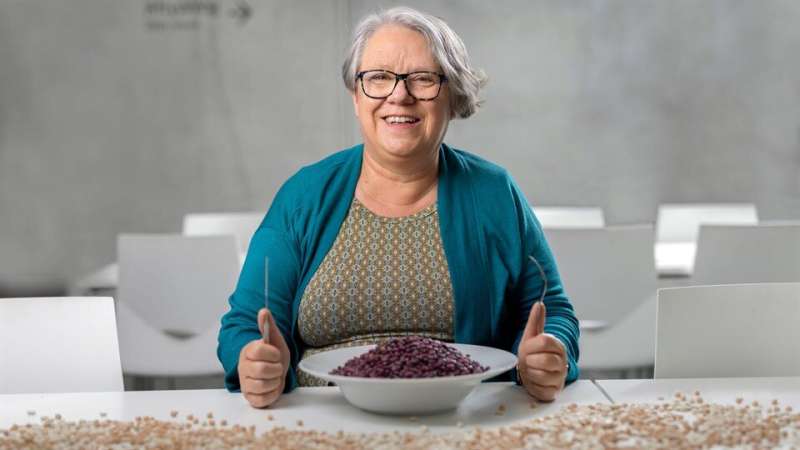This article has been reviewed according to Science X's editorial process and policies. Editors have highlighted the following attributes while ensuring the content's credibility:
fact-checked
trusted source
proofread
Why do Danes find it difficult to eat meat-free?

Reducing meat consumption is a difficult discipline for the Danes. Senior Advisor Sisse Fagt at DTU National Food Institute has monitored the Danes' dietary habits for several years and below she explains why the Danes struggle with the meat-free diet.
Why is it so difficult for Danes to eat less meat?
In general, Danes are quite conservative when it comes to their diet. When you look at the country as a whole, we generally prefer meat, gravy, and potatoes. The Danish cuisine is characterized by the fact that we are an agricultural country where meat and dairy products have traditionally played a big role.
Who is best at reducing their meat consumption?
Like all other health trends, young people, women, and city dwellers are best at changing their behavior, and this also applies to a meat-free diet. Men in particular eat a lot of meat—almost twice as much as women. If we could get the men to eat the same amount as women, we would have come a long way.
So men have a special responsibility?
Yes. But the decision on what to eat and the cooking itself still predominantly lies with the women. Research shows it is easier to introduce plant-rich diets if you do not explicitly state that you will be eating vegetarian from now on. You just have to put it on the table and explain that it's an Italian stew with fresh summer vegetables.
According to the new dietary guidelines, we must replace meat with, e.g., legumes. How is that going?
It's really hard for most people. We eat very few legumes. Firstly, we are not at all trained to replace meat with something else. Secondly, legumes are not something we have used much of in our traditional cuisine in recent times.
Are there other obstacles?
Yes, a study has shown that many think legumes have a dull structure and taste, as well as a dull appearance. Legumes require us to become better at using a larger palette of spices to give them flavor, and the Danes are not very imaginative when it comes to spices. They mostly use salt and pepper and then curry, oregano, and thyme when feeling more adventurous. That some people dislike the appearance of legumes is a poor argument, because our own cuisine is also primarily brown—just think of a hamburger steak with brown gravy and fried onions.
In addition, the message about eating less meat is quite complex, because at the same time we need to make sure that our diet still contains the necessary nutrients. So focus should be on eating different kinds of vegetables, preferably the dark green ones, as well as the previously mentioned legumes. And it's not unimportant which fish you choose, either, if you want to take the climate into account. So there are a lot of things we need to think about. In general, simple campaign messages work best.
So how do we change our meat consumption?
The Danish Council on Climate Change aims to normalize plant-rich diets. Among other things, they have recommended that public kitchens, such as canteens in the public sector, take the lead by serving more plant-based food. In this case, politicians can help pave the way by making it a requirement. This is a way to initiate a cultural change, as it's not always enough to read about it and listen to good advice—it must be experienced too. When more and more Danes gain experience with eating meat-free food that both tastes and looks good and is filling, the trend may spread further.
Why are other Europeans better at reducing their meat consumption?
In general, everyone eats too much meat, but in France, Spain, and Italy, they have a different tradition of making vegetable dishes. In Southern Europe and in the Balkans, legumes are also part of the traditional cuisine. So all in all, it is easier for them.
How long will Danes take to change their habits?
We will keep improving, and I believe that in the next decade there will be a significant change towards less meat consumption, although I don't believe we will reach our goal by then. This will require action from many actors. Among other things, there must be political willingness to demand more plant-based diets in the public sector's kitchens, and producers must want to use the upcoming climate label, which makes it easier for consumers to make a climate-friendly choice. But the first battle will be to shift the balance between vegetables and meat on our plates. This is where we can reduce our dietary CO2 footprint, while also enjoying several health benefits.





















